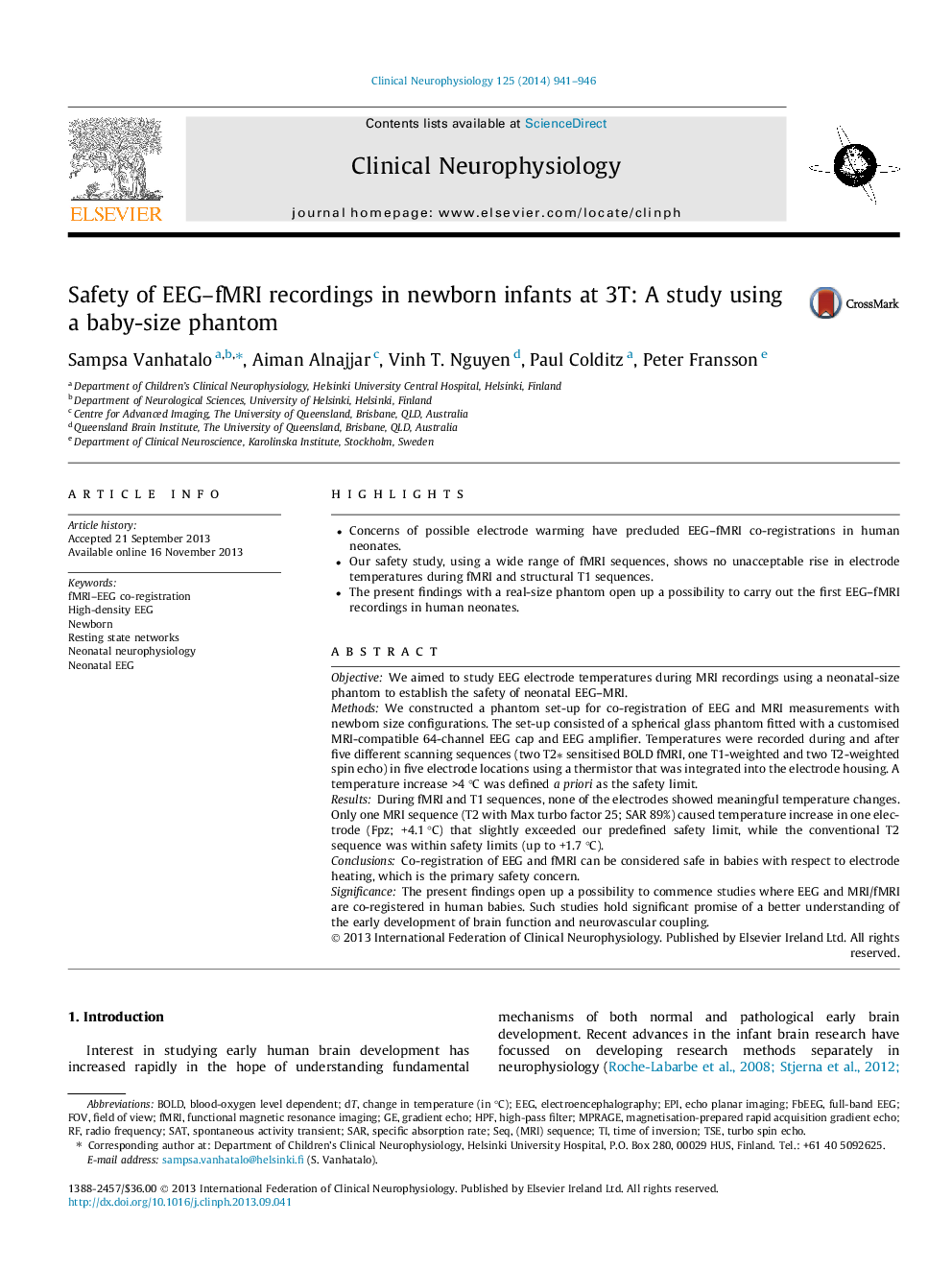| Article ID | Journal | Published Year | Pages | File Type |
|---|---|---|---|---|
| 3044077 | Clinical Neurophysiology | 2014 | 6 Pages |
•Concerns of possible electrode warming have precluded EEG–fMRI co-registrations in human neonates.•Our safety study, using a wide range of fMRI sequences, shows no unacceptable rise in electrode temperatures during fMRI and structural T1 sequences.•The present findings with a real-size phantom open up a possibility to carry out the first EEG–fMRI recordings in human neonates.
ObjectiveWe aimed to study EEG electrode temperatures during MRI recordings using a neonatal-size phantom to establish the safety of neonatal EEG–MRI.MethodsWe constructed a phantom set-up for co-registration of EEG and MRI measurements with newborn size configurations. The set-up consisted of a spherical glass phantom fitted with a customised MRI-compatible 64-channel EEG cap and EEG amplifier. Temperatures were recorded during and after five different scanning sequences (two T2∗ sensitised BOLD fMRI, one T1-weighted and two T2-weighted spin echo) in five electrode locations using a thermistor that was integrated into the electrode housing. A temperature increase >4 °C was defined a priori as the safety limit.ResultsDuring fMRI and T1 sequences, none of the electrodes showed meaningful temperature changes. Only one MRI sequence (T2 with Max turbo factor 25; SAR 89%) caused temperature increase in one electrode (Fpz; +4.1 °C) that slightly exceeded our predefined safety limit, while the conventional T2 sequence was within safety limits (up to +1.7 °C).ConclusionsCo-registration of EEG and fMRI can be considered safe in babies with respect to electrode heating, which is the primary safety concern.SignificanceThe present findings open up a possibility to commence studies where EEG and MRI/fMRI are co-registered in human babies. Such studies hold significant promise of a better understanding of the early development of brain function and neurovascular coupling.
